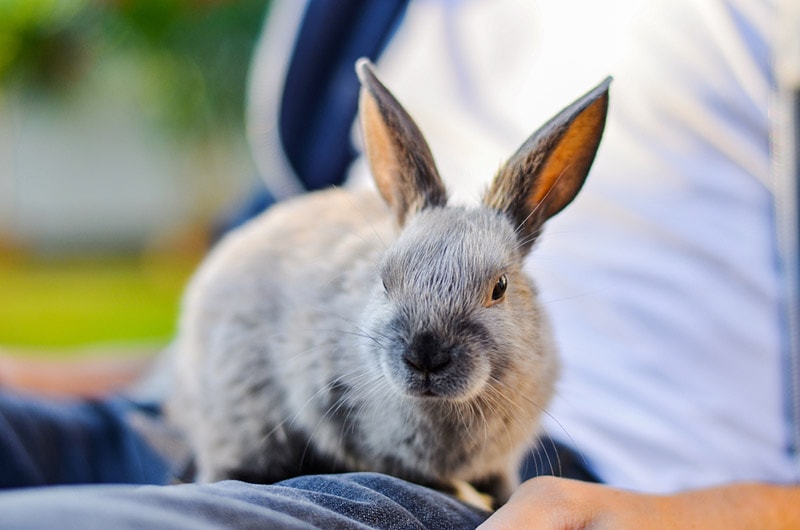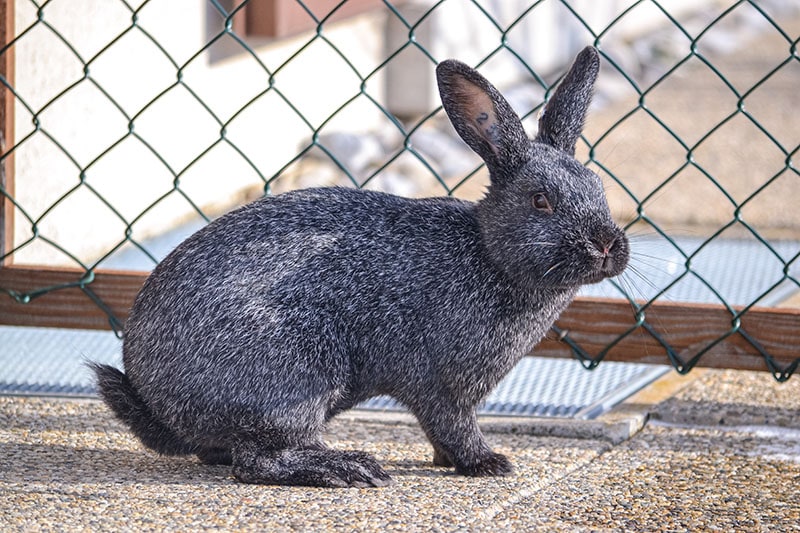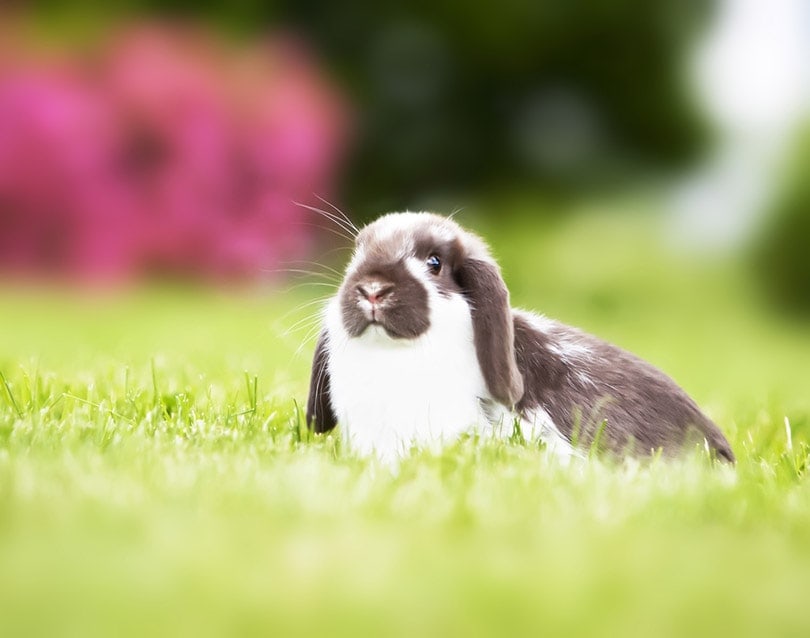Satin Angora Rabbit: Pictures, Care Guide, Lifespan & Traits
By Ed Malaker
Updated on
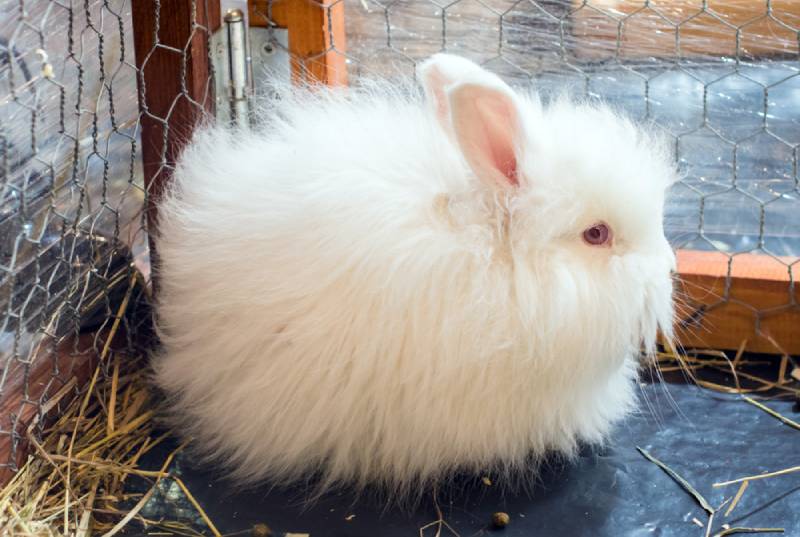
The Satin Angora Rabbit is a breed of domestic rabbit known for their luxurious, soft fur coat. They make great pets and are becoming more popular every year. If you want to know if this pet is right for your home, keep reading as we discuss their temperament, diet, exercise, needs, and potential health problems to help you determine if they are right for you and your family.
| Size: | Medium |
| Weight: | 4 – 12 lbs. |
| Lifespan: | 7 – 12 years |
| Similar Breeds: | English Angora, French Angora, Giant Angora, Jersey Wooly, American Fuzzy Lop |
| Suitable for: | Large and small families |
| Temperament: | Gentle and docile |
The Satin Angora Rabbit is a fascinating breed with a unique and beautiful wool coat that sets them apart from other rabbit breeds. They were originally developed in France in the early 1900s by crossing several different breeds, including the English Angora, the French Angora, and the Flemish Giant. The result is a small to medium-sized rabbit with a dense, shiny coat of wool that can be up to 3 inches long. This social animal thrives on attention and affection and can form strong bonds with their owner. Their small size and relatively low-maintenance needs make them ideal for first-time rabbit owners or anyone looking for a cuddly and affectionate companion.
Satin Angora Rabbit Characteristics
How Much Do These Rabbits Cost?
The cost of Satin Angora rabbits can vary depending on factors like the breeder, location, and quality of the rabbit. On average, Satin Angora rabbits can range in price from $50 to $300. Show-quality rabbits or those from reputable breeders with a proven pedigree can be more expensive, sometimes exceeding $300. Also, the cost of purchasing a rabbit is just one aspect to consider, as there are ongoing expenses related to housing, food, veterinary care, and grooming supplies.
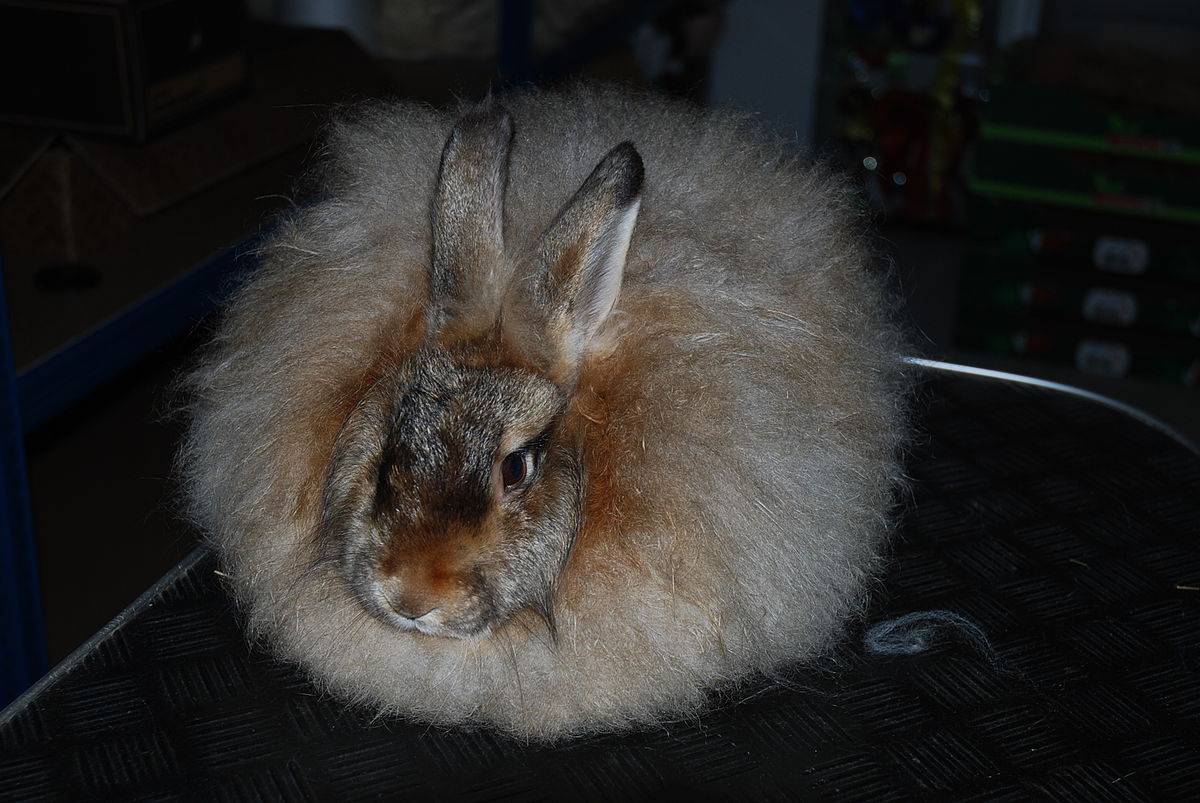
Temperament & Intelligence of the Satin Angora Rabbit
The Satin Angora Rabbit is known for their friendly and gentle temperament, making them a popular choice as a pet. They are sociable animals and can form strong bonds with their owners, enjoying human and rabbit companionship. However, like all rabbits, they have individual personalities, and each can have a slightly different temperament. The Satin Angora Rabbit is also known for their intelligence and trainability. They learn quickly, and with patience and positive reinforcement, you can train them to follow commands, use a litter box, and even perform tricks. Their intelligence also means they require mental stimulation and regular exercise to prevent boredom and destructive behavior.
Do These Rabbits Make Good Pets? 👪
Yes, Satin Angora Rabbits can make great pets for families. They have a friendly and gentle temperament, which makes them well-suited for families with children. They provide companionship, comfort, and stress relief and can be fun to interact with and watch. However, owning a rabbit is a long-term commitment and requires proper care and attention. Families considering adopting a Satin Angora Rabbit should ensure that they have the resources to provide adequate care, including a suitable living environment, proper nutrition, and regular veterinary check-ups. It’s also important to research their care requirements and behavior to ensure that they fit your family’s lifestyle and needs.
Does This Rabbit Get Along With Other Pets?
Satin Angora Rabbits get along well with other rabbits just fine and can get along with other pets. However, it depends on the individual rabbit’s personality and the other pet’s behavior. Rabbits are prey animals and can be easily frightened by predators or other aggressive animals, so you’ll need to introduce them to other pets slowly and under close supervision. When introducing a new pet to a Satin Angora Rabbit, do so gradually and in a neutral space to help prevent territorial behavior; allow the pets to get to know each other in a controlled environment. Also, provide each pet with a separate space and resources, such as food and water bowls, litter boxes, and hiding areas, to prevent competition and territorial behavior.
Things to Know When Owning a Satin Angora Rabbit
Food & Diet Requirements 🥕
A proper diet is essential for the health and well-being of Satin Angora Rabbits. They require a diet that is high in fiber and low in fat and provides a variety of nutrients. High-quality grass hay, such as timothy hay, should comprise most of a rabbit’s diet, as it provides essential fiber to keep the rabbit’s digestive system healthy and aids in wearing down their teeth. Fresh vegetables, including leafy greens, carrots, and bell peppers, should also be a part of a rabbit’s diet. You can feed them high-quality rabbit pellets in small quantities to provide additional nutrients, and ensure that they have access to plenty of fresh water.
Habitat & Hutch Requirements 🏠
The hutch should be spacious enough for your Satin Angora rabbit to move around comfortably. A general guideline is for the hutch’s length to be at least four times the length of the rabbit’s body, allowing for ample space for them to hop and stretch. A habitat with multiple levels or platforms provides more living space and opportunities for exercise. It also helps simulate the natural behavior of rabbits, as they enjoy jumping and exploring different levels. It should have a solid floor with rabbit-safe bedding or a soft mat for additional comfort. It should also protect them from harsh weather and have insulation and a waterproof roof if you keep them outside.
Exercise & Sleeping Needs 🐇
Satin Angora Rabbits are active and energetic and require regular exercise to maintain their physical and mental health. They should have access to a large, enclosed space where they can move freely, like a playpen or a large indoor or outdoor enclosure that provides a safe space for your rabbit to exercise. Toys like chew toys or balls can encourage them to be more active and stimulate their mind. Spending time playing with your rabbit by engaging them in games or offering treats as rewards can help build trust and strengthen your bond with your pet while providing them with exercise. They are most active in the early morning and at night when the sun is low and will take regular naps throughout the rest of the day, so they need a quiet and comfortable sleeping space away from foot traffic.
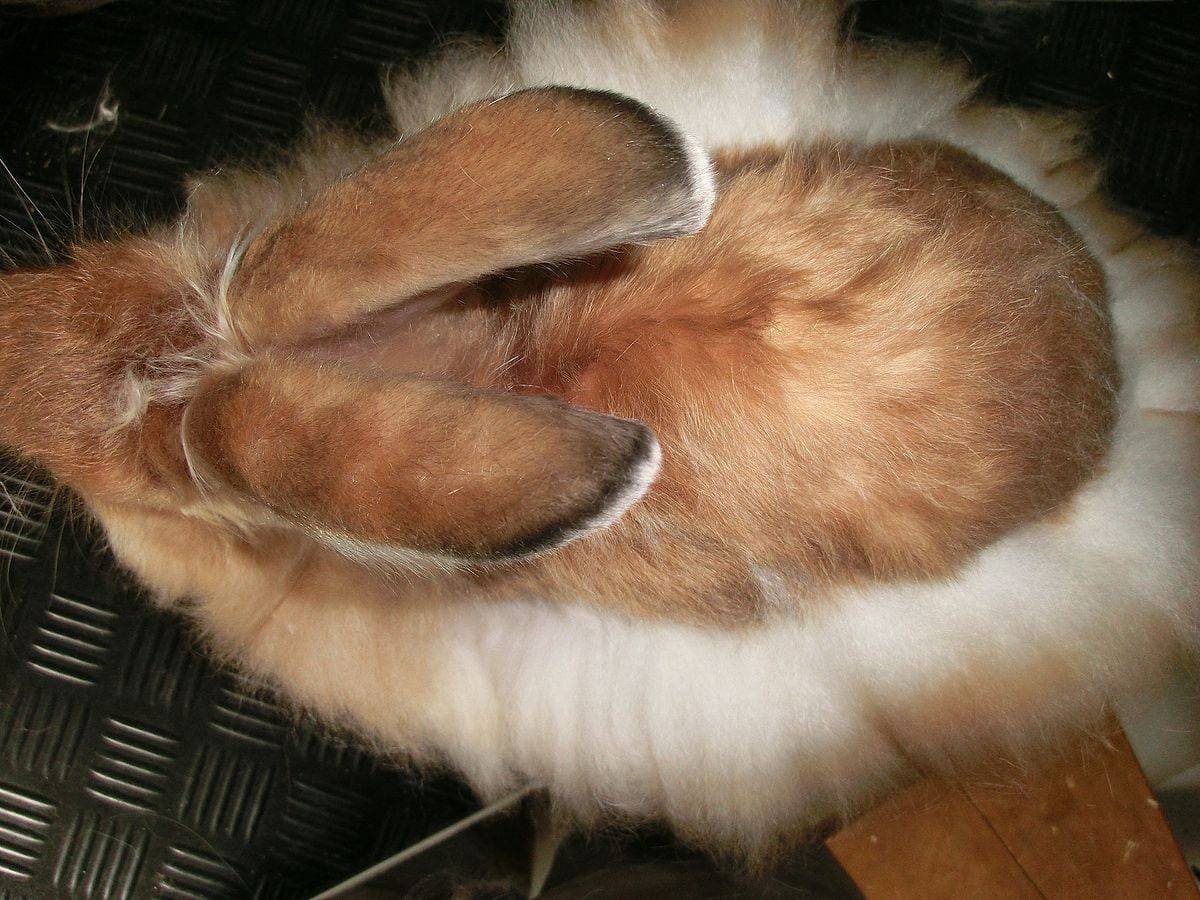
Training 🥎
Satin Angora Rabbits are generally intelligent, and you can train them to do certain behaviors or tricks. However, you’ll need to approach training positively and gently, as rabbits can become stressed or fearful when handled roughly. Use positive reinforcement techniques, such as offering treats or praise, to reward your rabbit for desired behaviors. Keep training sessions short and frequent to help keep your rabbit engaged and prevent them from becoming bored or stressed, and be consistent with your training, using the same commands or cues each time to help your rabbit learn and recognize the behavior that you are trying to teach. Most importantly, be patient, as it can take quite a while for them to learn a new trick, and getting frustrated will only lead to stress and fear.
Grooming ✂️
Satin Angora Rabbits have long, dense, and silky fur that requires regular grooming to keep it in good condition. Brush your rabbit’s fur at least once a week with a slicker brush or a comb to remove loose fur and prevent matting. Trim your rabbit’s fur around their hindquarters and feet to avoid matting and to make it easier for them to move around comfortably. Satin Angora Rabbits do not require regular baths, as their fur is naturally self-cleaning, though you may need to spot-clean them as necessary. You will also need to trim your rabbit’s nails regularly to prevent them from becoming overgrown and causing discomfort.
Lifespan and Health Conditions 🏥
Serious Conditions
Dental Issues
Rabbits’ teeth continue to grow throughout their lives, and dental problems can arise if they become overgrown or misaligned. Signs of dental issues include difficulty eating, drooling, and weight loss. The best way to prevent dental problems is with a proper diet.
Gastrointestinal Stasis
Gastrointestinal stasis is a condition that occurs when the digestive system slows down or stops working properly. Signs of gastrointestinal stasis include a loss of appetite, lethargy, and a decrease in fecal output. Treatment can consist of hydration and medication.
Flystrike
Flystrike occurs when flies lay their eggs on a rabbit’s skin and the larvae that hatch feed on the rabbit’s flesh. Signs of flystrike include a strong odor, lethargy, and difficulty moving. It’s a life-threatening problem that requires immediate veterinary care.
Minor Conditions
Hairballs
Satin Angora Rabbits are prone to developing hairballs due to their long fur, and they can cause digestive issues and be potentially fatal if left untreated. Signs of hairballs include decreased appetite, lethargy, and difficulty passing stool. A vet can use message therapy, fluids, and other means to help break up the hairballs.
Respiratory Infections
Rabbits can develop respiratory infections, especially in damp or dirty environments. Signs of respiratory infections include sneezing, discharge from the nose or eyes, and difficulty breathing. In some cases, it can result in the rabbit’s death.
- Hairballs
- Respiratory Infections
- Dental Issues
- Gastrointestinal Stasis
- Flystrike
Male vs. Female
There aren’t many significant differences between males and females regarding temperament and behavior, though a few physical differences exist. Males, or bucks, tend to be larger than females, also known as does. Bucks have visible testicles and a more rounded genital area and may exhibit more territorial behavior, such as spraying urine to mark their territory. Neutering or spaying your Satin Angora Rabbit can help prevent territorial behavior and reduce the risk of certain health issues, such as reproductive cancers.
3 Little-Known Facts About Satin Angora Rabbits
1. They were bred for their fur
Breeders created Satin Angora rabbits for their soft, shiny fur, which was important for textiles and clothing long before the rabbits became popular pets.
2. They are skills jumpers
Satin Angora Rabbits are skilled jumpers and can easily clear obstacles that are several feet high.
3. They are best kept with companions
Satin Angora Rabbits are social animals and enjoy the company of other rabbits, so if you’re considering getting a Satin Angora Rabbit, getting them a companion rabbit is a good idea.
Final Thoughts
Satin Angora Rabbits are beautiful and gentle animals that make great pets. They are curious and fun to watch while they explore their environment. However, they require specific care to maintain their health and happiness, such as a high-fiber diet, regular grooming, and plenty of space to exercise. As social animals, they are happier in the company of other rabbits and can also be great with children, as long as they play gently.
Featured Image Credit to: Zanna Pesnina, Shutterstock


